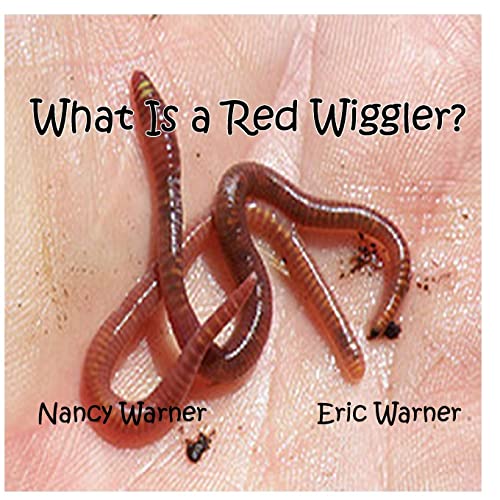Use Lake Hickory Bait for Exceptional Lawn Health and Gorgeous Greens
Open the Keys of Red Wigglers: Your Overview to Composting Success
The assimilation of red wigglers right into composting practices presents a significant opportunity for enhancing soil health and promoting sustainability. These organisms are not just effective recyclers of natural waste; they offer a myriad of benefits that can transform garden administration. Comprehending their requirements and habits is important for enhancing their capacity, from setting up a suitable worm bin to feeding them the best materials. As we discover the crucial parts of effective vermicomposting, one may question just how these tiny animals can cause a much more dynamic and productive yard environment.

What Are Red Wigglers?
(Red Wiggler Express)Red wigglers, scientifically referred to as Eisenia fetida, are a types of earthworm primarily made use of in composting because of their remarkable capacity to break down organic issue effectively. These worms are characterized by their reddish-brown pigmentation and a segmented body, commonly determining in between 3 to 4 inches in length. Unlike various other earthworm types, red wigglers grow in rich, natural atmospheres, making them ideal for vermicomposting systems.
Belonging To The United States And copyright, they are typically found in rotting leaves and compost heaps, where they play a vital role in nutrient recycling. Their adaptation to staying in a moist, cardiovascular environment enables them to eat large quantities of natural waste, simplifying into nutrient-rich spreadings that boost soil wellness.
Red wigglers recreate quickly, with a solitary worm efficient in creating numerous cocoons weekly, each including multiple hatchlings. This quick recreation rate contributes to their efficiency in composting procedures. They prefer temperatures between 60 ° F and 80 ° F, and their task level enhances substantially within this array, further aiding in the decay procedure. Recognizing the biology and behavior of red wigglers is vital for optimizing their possibility in composting applications.
Advantages of Making Use Of Red Wigglers
Using the power of red wigglers in composting offers numerous benefits that enhance soil health and promote sustainable waste management. These amazing organisms efficiently break down raw material, changing cooking area scraps and backyard waste right into nutrient-rich vermicompost. This ended up product is extremely helpful for plant development, as it enhances soil structure, raises dampness retention, and enhances nutrition accessibility.

(Red Wiggler Express)Additionally, the visibility of red wigglers in your composting system can speed up the composting process, generating top notch compost in a portion of original site the moment compared to traditional approaches. The castings generated by these worms are likewise including beneficial microbes that even more improve the soil community.
Setting Up Your Worm Bin
Creating an effective worm container is a simple process that can considerably enhance your composting initiatives. The initial step is choosing a suitable container. Worm containers can be made from plastic storage space containers, wooden boxes, or readily available worm containers. Make sure the container has sufficient water drainage and ventilation openings to maintain ideal dampness levels and air flow.
Next, prepare the bed linens material, which offers as the worms' habitat. A mix of shredded paper, cardboard, and coconut coir works well, offering a comfy setting for the worms.

Feeding Your Red Wigglers
To make certain the wellness and efficiency of your red wigglers, it is important to offer them with a balanced diet regimen that satisfies their dietary requirements. Red wigglers flourish on a varied variety of organic materials, which not only supply required nutrients but additionally advertise efficient composting.
Beginning by including cooking area scraps such as vegetable peels, fruit cores, and coffee premises. Prevent citrus fruits, onions, and garlic, as these can be destructive to worm health and wellness. Additionally, introduce shredded paper, cardboard, and completely dry fallen leaves to produce a well-aerated environment.
Feeding regularity should be checked; typically, worms can eat half their body weight in food weekly. It is vital to avoid overfeeding, as excess food can cause unpleasant smells and draw in parasites. A good technique is to add food in little quantities, allowing worms to refine it prior to introducing a lot more.
Preserving moisture degrees is also important; the bed linens should be moist yet not soggy. Finally, make sure to on a regular basis examine the temperature and pH levels of the container to ensure an optimal atmosphere for your red wigglers, inevitably enhancing their composting efficiency.
Harvesting and Using Garden Compost
A successful composting process with red wigglers culminates in the rich, dark compost called vermicompost, which can significantly boost dirt health and wellness and plant growth. Harvesting this nutrient-dense material typically occurs every 3 to 6 months, depending upon the size of your system and the quantity of natural matter being processed.
To collect, delicately different the compost from the worms and any undecomposed products. One efficient technique involves relocating the components of the bin away and adding fresh bedding and food to the empty area, encouraging the worms to move. After a few days, the compost can be accumulated from the opposite side.
It is essential to use vermicompost appropriately to maximize its advantages. By incorporating vermicompost into your horticulture regimen, you not only reuse organic waste however likewise produce a growing community that sustains sustainable gardening methods.
Verdict
In summary, red wigglers offer as extraordinary allies in composting efforts, changing natural waste into nutrient-rich vermicompost (Red Wiggler Express). Their special organic characteristics and effective waste handling capacities contribute considerably to lasting gardening methods. By comprehending the optimum problems for their habitat, feeding requirements, and compost harvesting methods, garden enthusiasts can boost dirt health and promote plant vitality. Welcoming vermicomposting not just lowers landfill waste but likewise promotes a much more ecologically liable strategy to horticulture and resource administration.